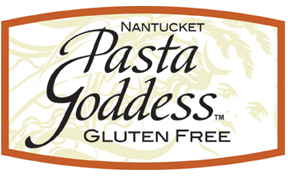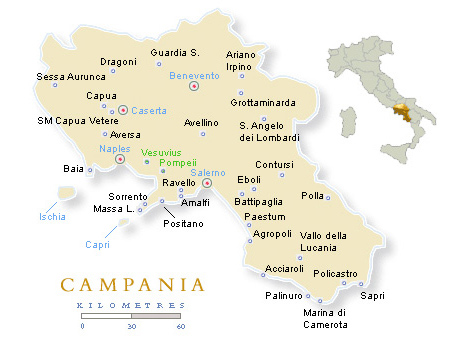Set on the southwestern coast of
southern Italy, just above Sicily, the
Campania region and its capital of
Naples are considered the country’s
center of gastronomy.
Not historically blessed with the riches
of its northern neighbors, the region
has had to show ingenuity in creating
dishes that showcase the abundance
available from the sea, farm, and
orchard – making almost every dish
more economical to create. The dishes
aren’t as heavy as in northern regions
where cooks rely on drenching their
dishes in thick rich sauces. Instead,
dishes are prepared with fresh spices
and herbs that intensify the flavor.
The geography of Campania is rocky
and mountainous, not suitable for
pastures and dairy cattle. But the
volcanic soil on the rugged hillsides
is rich in the nutrients provided by
eruptions of Mt. Vesuvius.
(associated more with Asia than Italy)
was a common sight in the fields of
Campania. The land between Naples
and Rome was too marshy for
traditional grazing cows. Thus, the
region created the incomparable
mozzarella di bufala, a unique cheese
that today enjoys the same sought-after
protected geographical status that the
finest cognacs and champagnes from
France enjoy. This mozzarella from
Campania is protected by Italian law.
The rocky soil and hills are also not
good for large crop fields – but
excellent for olive orchards, grape
vines, and tomato plants. Neapolitans
led Europeans in being the first to use
tomatoes not just as an ornamental
plant, but as an integral ingredient in
food. And…pasta, of course.
Good, wholesome fresh food made with
love and fresh local ingredients. I love to
cook and to see people savor the meals
I make for them. This is my passion, my
heritage. The roots of this passion were
nurtured by my grandmother, my mother,
my aunts, and my father in the Campania
region of southern Italy where I was raised
on a small family farm. Virtually all of our
food came from our land – from the flour
that went into our bread, the olives we
pressed for our oil, the grapes we used for
our wine, and the herbs we added for
unmatchable flavor. We raised our own
animals and they ate the corn we grew.
We even made our own butter and soap.
I remember awakening in the early morning
to find my mother getting the brick wall
oven sizzling hot for the bread she was
about to bake. I accompanied her to the
garden to pick fresh vegetables and foraged
through the forest with her in search of wild
asparagus and mushrooms.
in the fields and orchards with my father
helping to till the earth and nurture the crops
that would produce the ingredients for our
meals. Everything we ate was fresh,
seasonal, organic, and local.
Food and cooking are cultural values in
Italy – almost as important as faith and
family. My mother’s greatest gift is creating
amazingly delicious healthy meals with the
simplest, freshest ingredients. That was
what her mother taught her. It is how she
cooked in Italy and it is how she cooks now.
She passed that legacy down to her five
children, just as I am passing it down to my
twin daughters and my son. My children
and I work together in the kitchen,
reproducing and fine-tuning recipes that
have been passed down through generations
of my family.
The kitchen is the center of activity in our
home, and when “Nonna” or my sisters
come to visit, this is where we spend most
of our time.

